Zanzibar is home to a fragile host of ecosystems that are the habitats of a number of amazing mammals, birds, reptiles and amphibians. A great number of these animals can only be found in this part of the world and the ecosystems that support them require extensive preservation efforts so that each one of these animals can continue to survive.
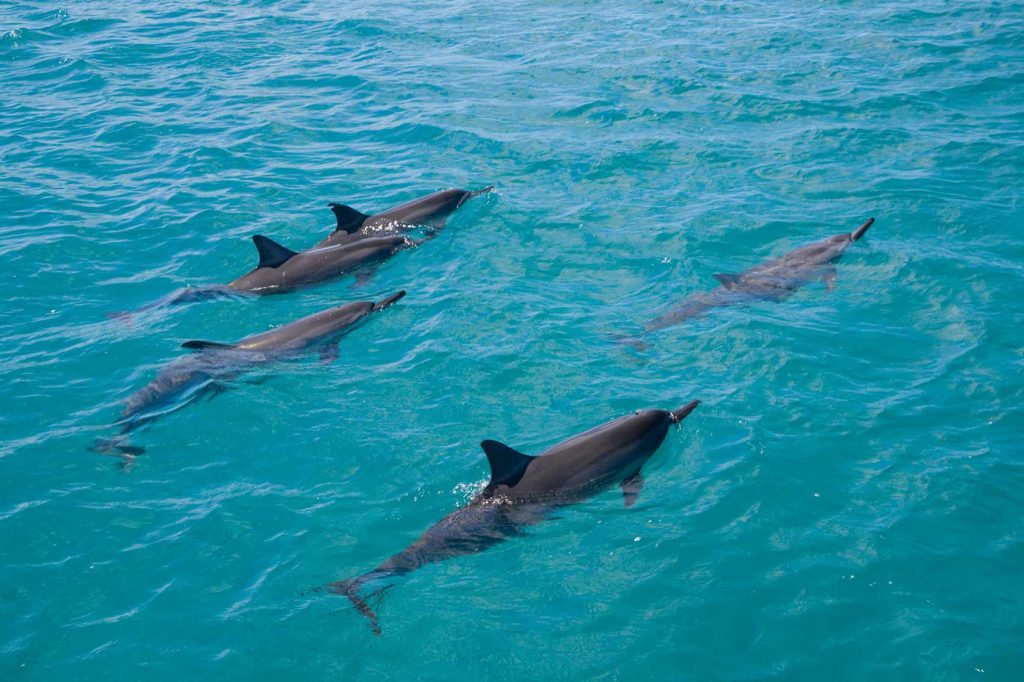
Dolphins
There are many types of dolphins that can be found throughout Zanzibar. Some of the main types of dolphins include the Indo-pacific bottlenose, Indo-pacific humpbacked dolphin, and the spinner dolphin. Each one of these species has its own characteristics, with the spinner dolphin being a long and slender mammal that feeds on fish near coral reefs.
The Indo-pacific humpbacked dolphin is a larger variety with a near-threatened status. These dolphins can sometimes grow as long as 9 feet and they are known for their unique humpbacked body. This type of dolphin sticks to coastal areas and can be a sight during a stay in Zanzibar if you are lucky.
The bottlenose dolphin is one of the most widely recognized dolphins in the world. They are known for their dark grey shape as well as their size which can range between 6 feet up to 13 feet in length. These dolphins are widespread and can be seen almost anywhere, whether they are feeding in coastal waters or out in the open ocean.
While all three of these dolphins can be found throughout Zanzibar the Indo-pacific humpbacked dolphin remains the rarest of these three.
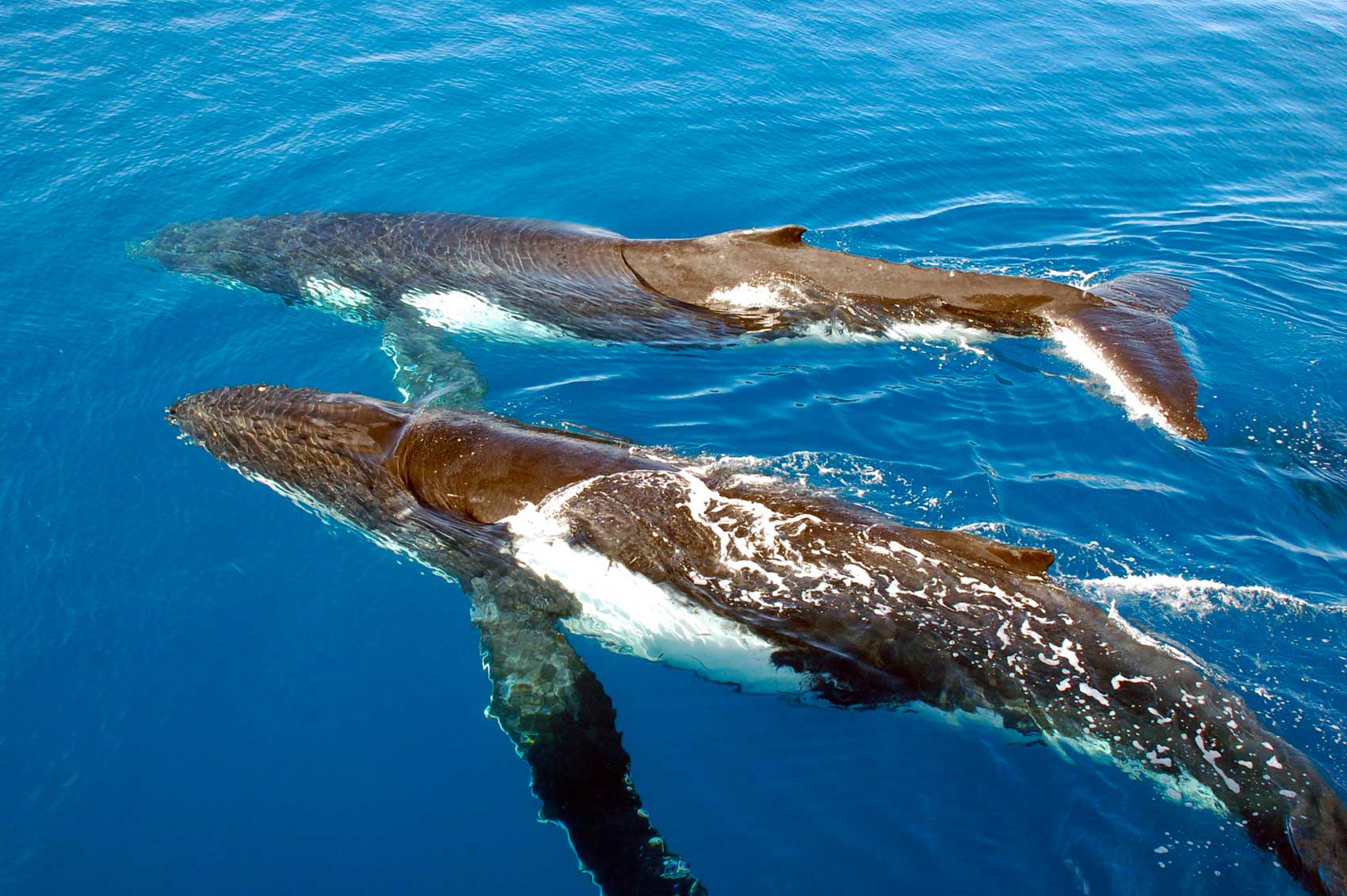
Humpback Whale
Humpback whales can be found off of the coast of Zanzibar. This species of whale can grow to an astounding 36,000 kg and become around 52 feet long. Humpbacks are known for their unique shape with long fins and a head that has several different types of small knobbed edges. Humpbacks are some of the most amazing creatures to see in the wild because they often surface and put on a breaching display. The warmer waters off of Zanzibar provides humpbacks with a perfect place for giving birth as well as for breeding. The water in and around Zanzibar can supply these large animals with krill as well as small fish.
This type of whale was once a massive hunting target for its oil and meat that. Even though it has been at one time classified as a severely endangered animal, their numbers have recovered considerably with strict hunting and fishing regulations.
Green Turtle
The green sea turtle is an endangered turtle species which can be found throughout the world’s oceans. These turtles feed mostly on seagrass which must be kept healthy in order to sustain their numbers. They are known for their relatively flat body and tear-shaped shell. They make their way through the ocean using elongated paddle flippers, and they often take up residence in lagoons so that they can easily feed off of seagrass.
With the endangered species title placed upon this animal, a number of organizations have prevented the ability for individuals to collect, hunt or kill this type of turtle. The turtles eggs are hunted for food illegally as they are coveted ingredients for soup and other delicacies.
A big danger that the green turtle faces is from fishing. Many commercial fishing nets can catch them and unfortunately strand them without food causing major injuries and in some cases death.
Real estate development as well as overfishing throughout the world have diminished their numbers. The turtles need a set space to lay their eggs on beaches, but resort developments around the world have eliminated nesting areas for them.
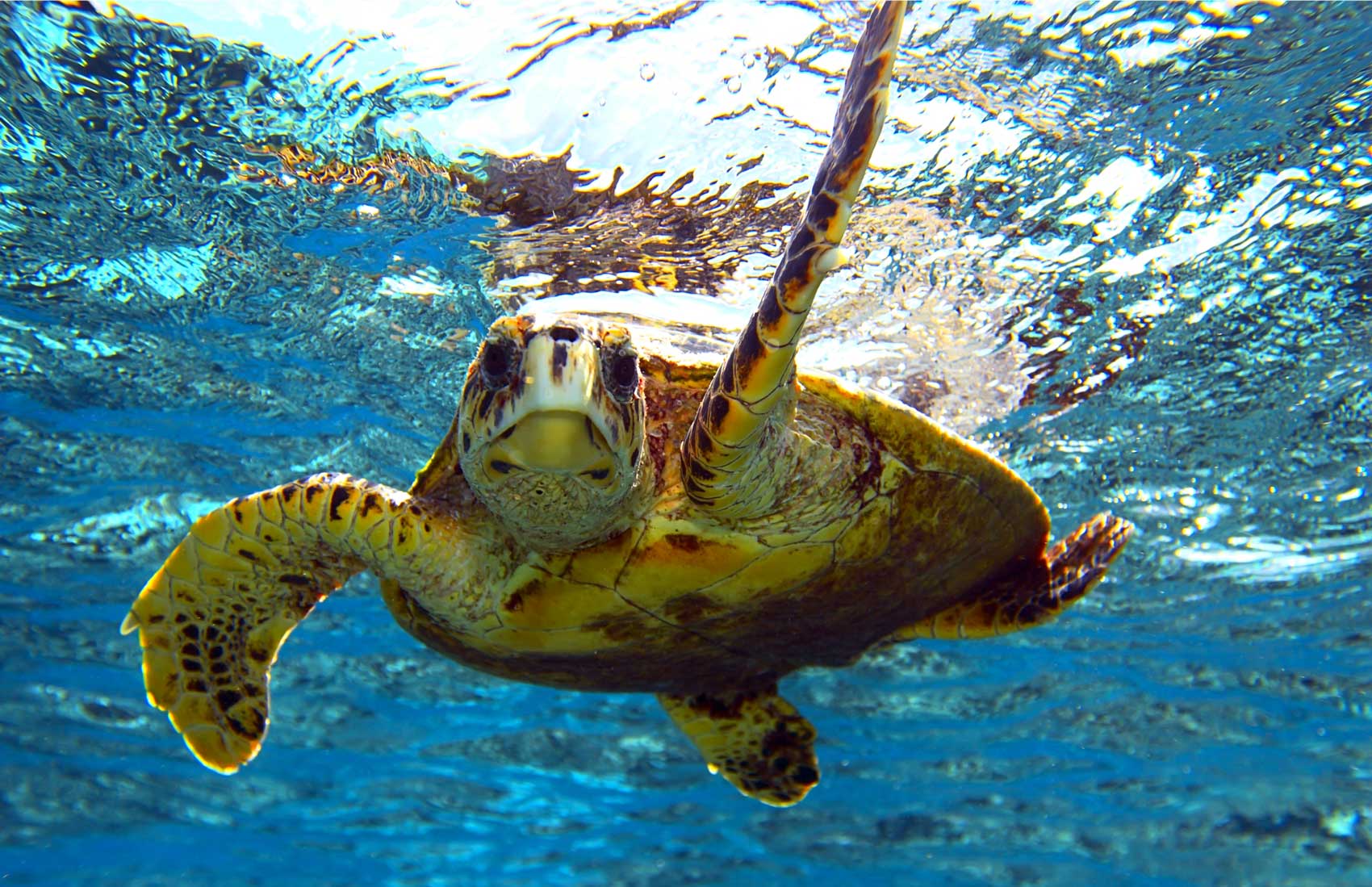
Apart from man there are a few unique predators for the turtle including crabs, shorebirds, marine mammals and more when they are younger as well as various types of sharks. If they are able to live a healthy lifestyle these turtles will travel over 2600 km to find proper spawning grounds and some of the largest varieties of these turtles can grow up to 660 pounds and live well over 80 years.
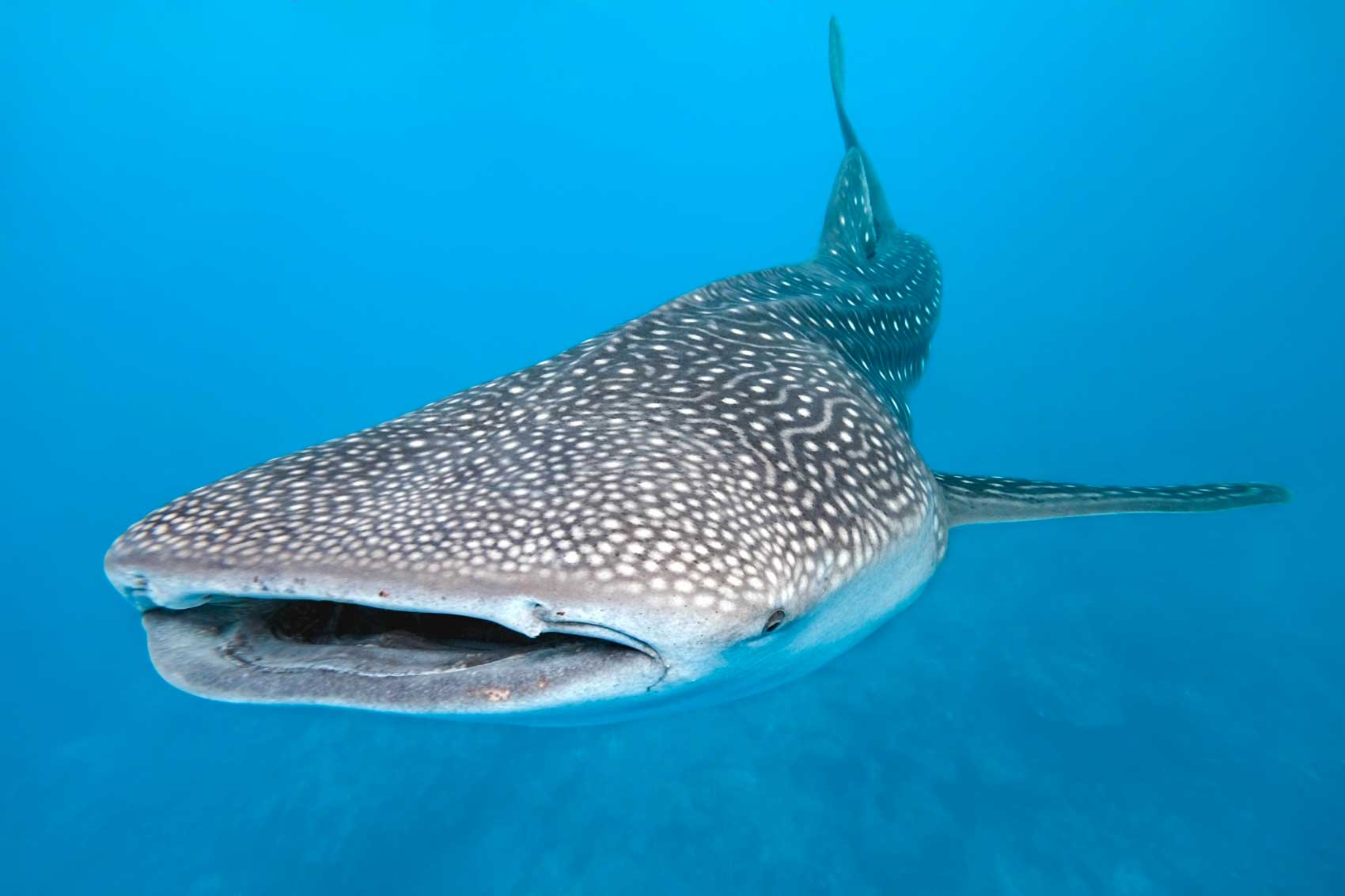
Whale Shark
Whale sharks are relatively slow-moving aquatic animals, and one of the largest fish species known. They are peaceful filter feeders, and although they are a species of shark they tend to eat only plankton that can be found in Zanzibar and along the Cape of Africa. Most of the time these sharks swim in the open ocean, and they can live for around 70 years on average.
This animal is quite an active feeder and they require a large amount of plankton, fish eggs, copepods, krill and plankton in order to survive. Generally, a whale shark requires at least 46 pounds of plankton every day in when they are young and adults can often eat much more. As some of the animals can reach over 35 tons and grow to lengths of 40 feet or more, it’s no wonder that they need a lot of food. Unfortunately, whale sharks are an endangered species.
Whale sharks do interact with divers and are generally quite friendly towards underwater photographers. The main problem that these animals face in the wild is the chance that they could run out of food as coral reefs and underwater environments fall into disrepair due to pollution and climate changes. With food supplies decreasing, these sharks numbers are dwindling too.
Today, humpbacks live with a number of threats to their existence including collisions with ships, fishing nets and noise pollution. As more people go to the coastal areas and head out into the waters around Zanzibar, their numbers could become threatened again but overall this species does not require any conservation effort at this time. Zanzibar is an excellent place to try your hand at whale watching as there are many charter vessels that can bring you in close proximity to humpback whales at the right time of year.
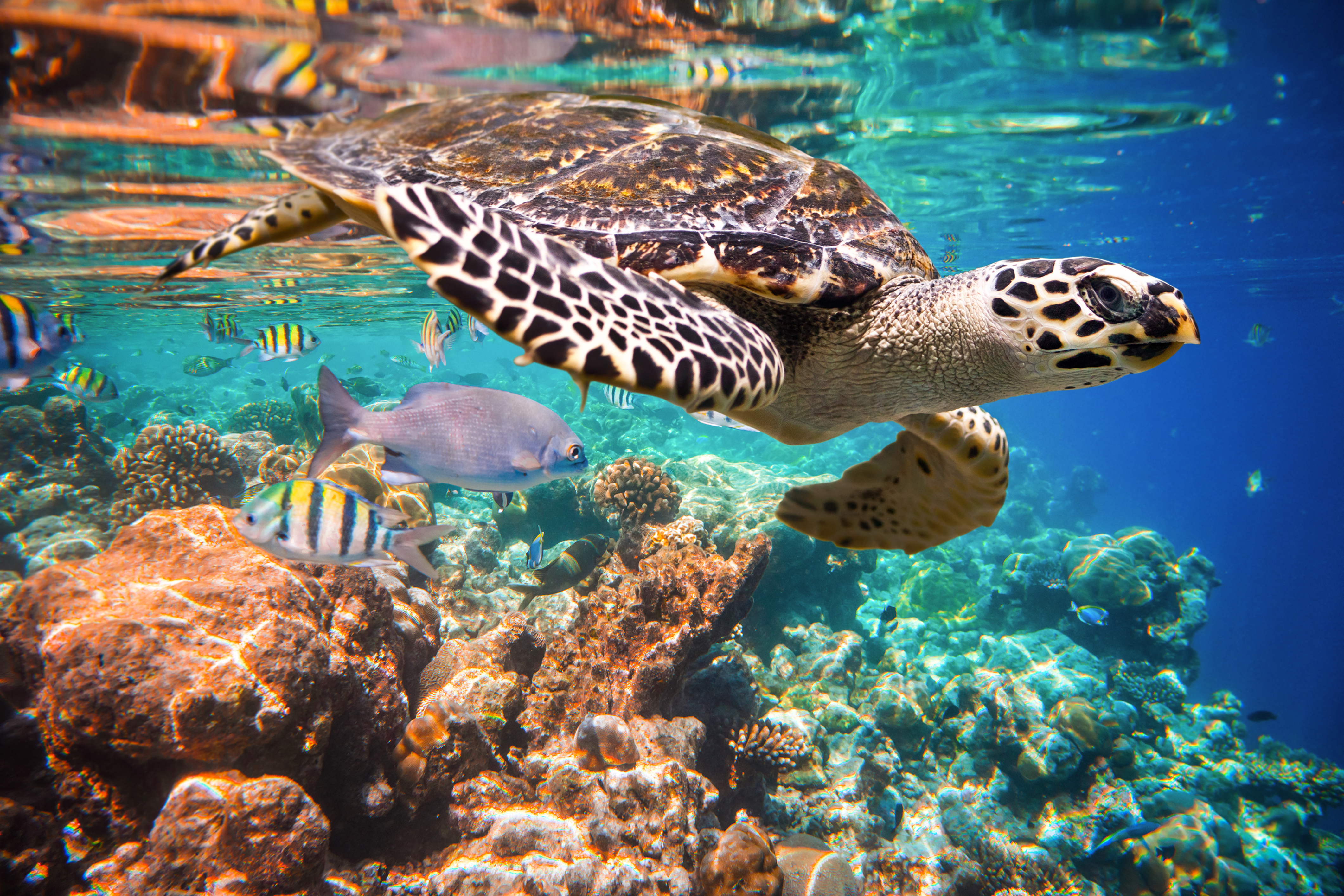
Hawksbill Turtle
The hawksbill sea turtle is a critically endangered species that can also be found throughout Zanzibar. Although it looks somewhat similar to the green sea turtle, it has a more flattened shape as well as a stickier shell. The coloring on this sea turtle is also not quite as striking as found in some other sea turtle varieties. The curving beak on this sea turtle is the last telltale sign of identifying the species.
This species lives mostly in coral reefs and very shallow lagoons, feeding on smaller fish, sponges and creatures that typically live inside the coral. Sea sponges remains one of the top choices for this turtle, and in order for them to get a quality food supply is extremely important for the reef to stay healthy.
Hawksbill turtles have become critically endangered due to humans fishing and capturing this turtle. They are currently a protected species, making any type of capturing or hunting illegal. This sea turtle reach a weight of around 180 pounds, and measure around 3 feet in length. The skin on a hawksbill turtle can sometimes become toxic due to the various foods that they can eat from the reef. They can also sometimes become bio fluorescent due to the animals that they eat that are biofluorescent. Most of these turtles live around 25 years to a maximum of 35 years. Apart from humans, sharks are their natural enemies.
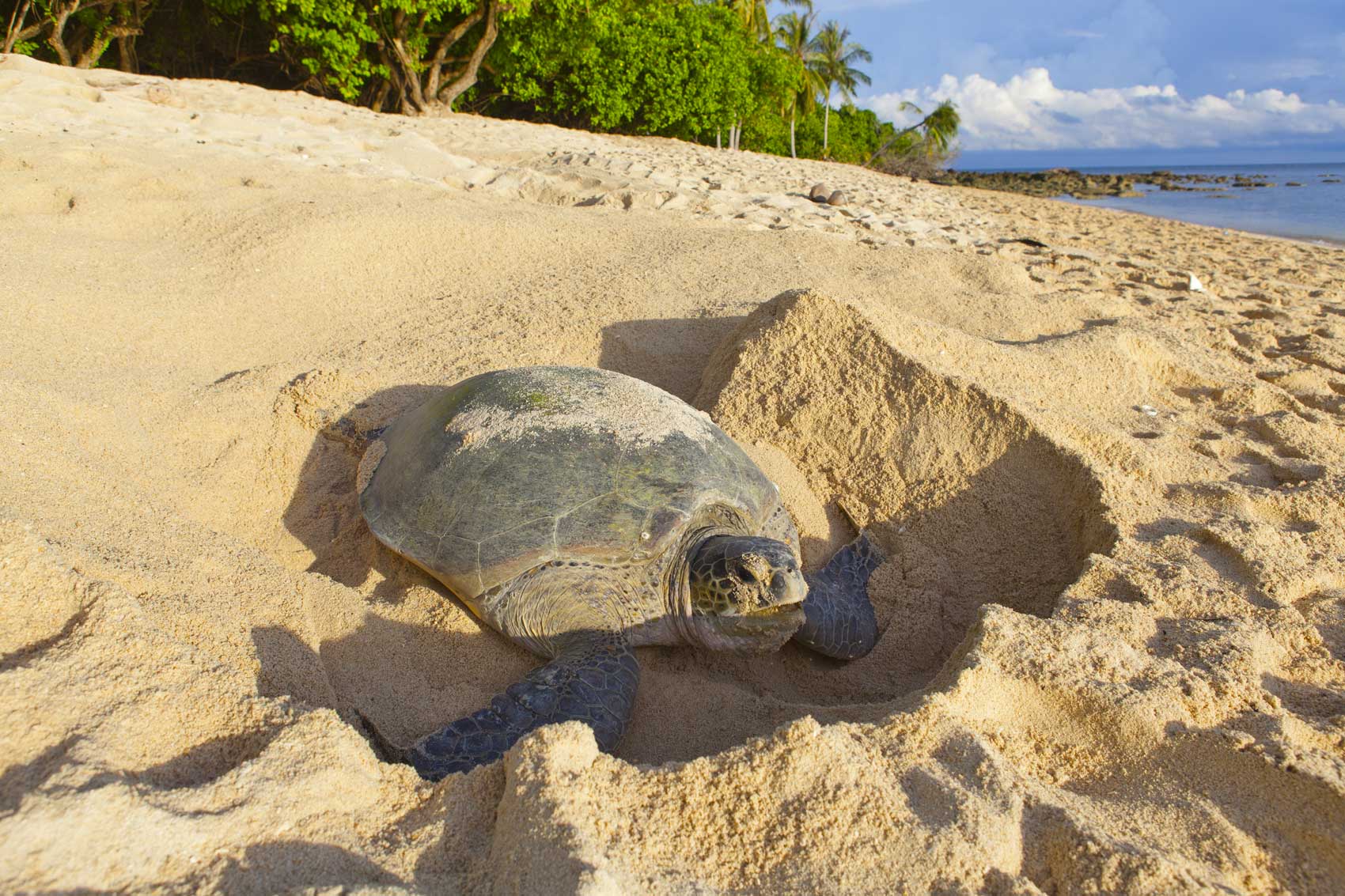
Leatherback Turtle
The leatherback sea turtle is also known as the leathery turtle, or Lute turtle. They are currently have a threatened status, and they are one of the largest living turtles in the world. Leatherback turtles can get the fourth heaviest among the reptiles of the world, and they are known for their heavy and bony shell and oily flesh that covers the rest of its body.
They can often grow to have a flipper wing span in excess of 9 feet, and weigh up to 1540 pounds. Leatherback turtles are easily told apart from other sea turtles because it does not have the same bony style shell and the skin has a dark gray to black color. They are some of the deepest diving animals and have reached depths of over 4200 feet. They are one of the fastest moving reptiles that in some cases can get up to swimming speeds of 35+ kilometers per hour.
Generally, these turtles can be found off the coast of Zanzibar in open oceans, they need to eat regularly and they feed on a number of cephalopods that can be found throughout coral reefs. Average estimates would suggest that these turtles can live for around 50 years. They breed at sea and lay hundreds of eggs, many of which are stolen by predators.
The main reason for the threatened status of the leatherback turtle is human intervention. Not only are their eggs regarded as a delicacy, but they often fall prey to intestinal blockage due to eating plastic found in the ocean. If humans make an active effort to reduce litter and dumping into open oceans, we can work at preserving their numbers for the future.
Dugong
Dugong are medium-sized marine mammals which are also on the list of endangered species. The dugong is a fairly close relative of the manatee and one of the few marine herbivore mammals. Dugongs require an extensive amount of seagrass in order to live. Healthy seagrass is their main source of food, and this means that many dugongs spend their time in coastal habitats where meadows of seagrass grow.
You can often find dugong in the same place throughout Zanzibar, but they can be difficult to locate as their numbers continue to drop. Dugongs have a lifespan of around 70 years and they take quite a long time to reproduce. It’s their slow reproduction rate as well as their almost insatiable need for healthy seagrass that contribute to their lowering population numbers.
Without the required amount of food to support the population as well other groups of animals in the same area, dugongs are regularly hunted and accidentally injured by people.
In the past, dugongs were hunted for their oil as well as for their meat. Today, however, they have become protected under the conservation status.

While many places throughout Africa and the world no longer hunt these animals, they are still very much at risk due to powerboats as well as a dwindling food supply. Dugong can be injured by boat motors and fishing nets. As global warming and pollution continues to ruin the seagrass that they depend on, dugongs’ numbers will continue to decline.

